Citrine
Shine bright with the radiant beauty of our Citrine Jewelry collection. Known as the Stone of Abundance and Joy, Citrine glows with warm golden hues that symbolize prosperity, happiness, and positive energy. Each piece brings a sunny sparkle that’s as versatile as it is uplifting.
At Purple Leopard Boutique, you’ll find Citrine pendants, rings, earrings, and bracelets crafted in sterling silver and gold-plated designs. Whether styled for boho chic, modern elegance, or everyday wear, Citrine jewelry adds both meaning and brilliance to your look.
Perfect as a gift or a personal treasure, Citrine jewelry embodies beauty, optimism, and timeless charm.
-


Faceted Teardrop-Shaped Citrine Sterling Silver Pendant
Younique Jewelry
$47.00Elegant sterling silver pendant featuring a faceted teardrop-shaped Citrine. Approximately 1 1/8" long, with a generous bail to accommodate a thicker chain. A stunning piece showcasing November’s birthstone. PRT300 Color...$47.00 -


Small Vintage Pave Crystal Heart Necklace with Citrine Beads
KBD Studio
$64.00This precious necklace features a small brass cast heart with tiny Pave Crystal details with Citrine beads. Wear it alone, or layer it up!! Chain Length: 16" with 2" extender. Heart approximately 1/2" in length. Metal: Brass...$64.00 -


Small Yellow Round Cut Faceted Citrine Sterling Silver Dangle Earrings
Younique Jewelry
$69.00Yellow round cut faceted Citrine sterling silver gemstone earrings. Approximate length 1.25". Wire dangle hooks. Made in India. SANC145 Mystical Properties: In ancient times, Citrine was carried as a protection against snake venom and evil...$69.00 -
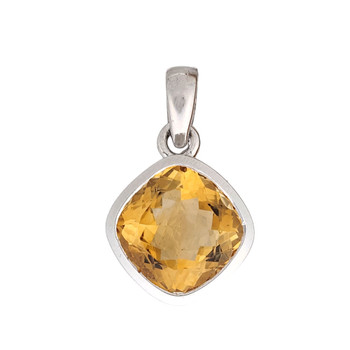

Faceted Citrine Sterling Silver Pendant
Younique Jewelry
$179.00Faceted Citrine sterling silver pendant. Pendant size: Approximately 1.25" long. Beautiful cut and the pendant has a deep bezel with a large bale so you can wear a thick chain with it. Citrine helps one to manifest personal...$179.00 -

Small Yellow Marquise Cut Faceted Citrine and CZ Sterling Silver Dangle Earrings
Younique Jewelry
$49.00Yellow marquise cut faceted Citrine sterling silver gemstone earrings. Approximate length 1.5". Citrine approximately 4mm x 8mm. Wire dangle hooks. Made in India. SANC153 Mystical Properties: In ancient times, Citrine was carried as a...$49.00 -
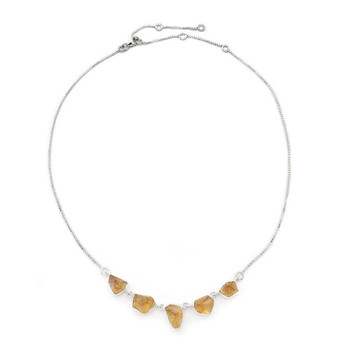
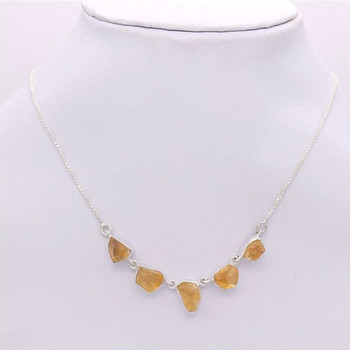
Raw Cut Citrine Sterling Silver Necklace
Younique Jewelry
$76.00Raw cut Citrine sterling silver necklace. Size approximately 14-18" adjustable. One of a kind necklace. Lobster clasp fastner. NOTE: This may not be exact necklace as pictured but very very close. Shapes may be slightly different...$76.00 -


Citrine, Carnelian, Garnet, Sterling Silver Pendant w/ Necklace
Younique Jewelry
$59.00Two Citrine, Carnelian and Garnet round stones on a sterling silver pendant. Swirl silver design on a rectangle shaped pendant. Size approximately 2" x .75". Please note: Nylon black rope necklace included 18" long. Any...$59.00 -

Yellow Faceted Citrine Heart Dangle Earrings Sterling Silver
Younique Jewelry
$69.00Yellow faceted Citrine sterling silver gemstone earrings. Heart design. Approximate length 2". Teardrop and oval shaped Citrine approximately 11mm x 8mm. Wire dangle hooks. Made in India. 7.5 grams. Any unusual color that may be in...$69.00 -


Citrine Sterling Silver Pendant – Modern Trillion Cut Yellow Crystal
Younique Jewelry
$32.00Add a golden glow to your collection with this Citrine Sterling Silver Pendant. The design features a sleek modern setting with an open-cut silver frame that highlights a vibrant trillion-cut Citrine gemstone. Its warm, golden hue radiates energy and...$32.00 -

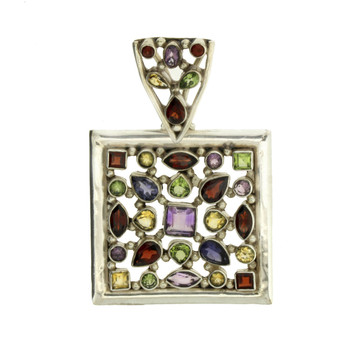
Large Multi Stone Faceted Square Pendant Sterling Silver Jewelry
Younique Jewelry
$199.00Large square colorful multi stone faceted sterling silver pendant. 31 different size Amethyst, Garnet, Citrine, Iolite, Garnet stones. Approximate length 2.5" x 1.75". Large bail so it can fit on a thick chain. 36.5 grams. Made...$199.00 -

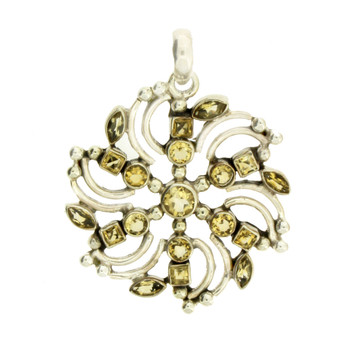
Large Multiple Faceted Citrine Stone Sterling Silver Pendant
Younique Jewelry
$109.00Sun spiral shape 19 faceted Citrine stones sterling silver pendant. Pendant size approximately 1.5" round. 17.5 grams. The photos in this listing are of the actual item you will receive. Any unusual color that may be in some of the...$109.00 -


Two Faceted Stone Oval Citrine Sterling Silver Pendant
Younique Jewelry
$29.00Two faceted stone Citrine sterling silver pendant. Pendant size: Approximately 1.25" x 1/2". Please note: Chain is not included. Approximately 3.1 grams. The photos in this listing are of the actual item you will receive. ...$29.00
